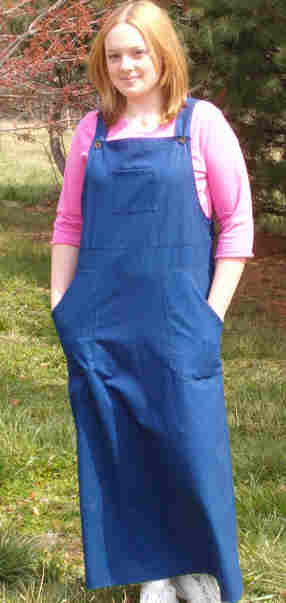‘Nuff Said.

‘Nuff Said.

 A basic misunderstanding of six words in I Thessalonians has possibly created more strangeness in fundamentalism than perhaps any other (with the obvious exception of the “weaker brother” principle — more on that later). “Abstain from every appearance of evil” has become a guiding principle to fundamentalists that is applied to everything everywhere.
A basic misunderstanding of six words in I Thessalonians has possibly created more strangeness in fundamentalism than perhaps any other (with the obvious exception of the “weaker brother” principle — more on that later). “Abstain from every appearance of evil” has become a guiding principle to fundamentalists that is applied to everything everywhere.
In the Greek the words are apo pantos eidous ponèrou apechesthe which literally translates to something like:
“Do not wear pants with punk rock patches. Also beware the bottles of sparkling grape juice with the foil tops, they might appear to be alcohol and stay away from video rental stores, someone might think you’re there renting a movie rated PG-13. Finally do not drive around town with a lollipop sticking out of your mouth or someone might think you are smoking.”
Which all just goes to show how important it is to learn Greek in order to get the deeper meanings out the Scriptures.
Also added to the list of things that might appear evil would be drinking root beer from dark bottles, wire-rimmed glasses, facial hair, clothing designed by gay guys, any hair style ever worn by any rock group anywhere, and anything that looks like it might be enjoyed by Billy Graham, his followers, or their household pets.
Trying to guess what innocent thing might possibly appear evil to any person on the planet makes the weirdness get pretty thick in a hurry. The Pharisees would have loved it.
 Fundamentalists eschew the relaxed informality of the come-as-you-are church service. In the fundamentalist’s view the words in I Samuel 16:7 read as follows “for man looketh on the outward appearance, but the LORD looketh on the heart”.
Fundamentalists eschew the relaxed informality of the come-as-you-are church service. In the fundamentalist’s view the words in I Samuel 16:7 read as follows “for man looketh on the outward appearance, but the LORD looketh on the heart”.
Although congregations will vary, most fundamentalist pastors would not be caught dead in the pulpit without their suit and tie on. Denim is the devil’s fabric and sandals are the comfortable footwear of the father of lies. Don’t even get them started on Rick Warren’s Hawaiian shirts.
One could argue that if fundamentalists really wanted to be conservative that the obvious choice would be for pastors to wear robes. Of course that would ruing the opportunity for all kinds of disparaging remarks about Roman Catholic and Anglican clergy as “men in dresses.” Giving up such a great way to bash the papists and their ilk is just not an option.
Single breasted, double breasted, herring bone, or twenty year old plaid, the fundamentalist pastor and his suits are not easily parted. Blessed be the ties that bind.
 Who doesn’t love a good magic show? Giving the gospel through sleight of hand is a staple of many fundamentalist children’s outreach programs. Even adults will stop and watch someone perform a gospel presentation via an entertaining act of subterfuge and trickery.
Who doesn’t love a good magic show? Giving the gospel through sleight of hand is a staple of many fundamentalist children’s outreach programs. Even adults will stop and watch someone perform a gospel presentation via an entertaining act of subterfuge and trickery.
The gospel rope tricks are some of the more popular gimmicks because they are inexpensive, quickly taught and have little risk of a spectator catching on fire. That’s always a something to look for in a magic act. The real risk here is that the trick will go very badly and the whole point will be lost. “Look boys and girls the three ropes are all…uh…well…they should have been the same…you’re all doomed.”
There’s another potential danger to gospel magic acts — they do not translate well into some more superstitious cultures. Missionaries who are a little too good at illusions may meet with charges of witchcraft. In these locations it may be better to stick with handing out Chick Tracts and fake money or run the risk of finding oneself in some very sticky situations indeed.
 The other night I opened the pages of my copy of “History of Fundamentalism in America
The other night I opened the pages of my copy of “History of Fundamentalism in America†by George W. Dollar [BJU Press, 1973] and a pamphlet fell out. A quick glance revealed that the pamphlet (also written by Dollar) was a comprehensive listing of Schools, Mission Boards, Magazines, Radio Broadcasts and Conferences/Camps along with a rating of their fundamentalism.
As the intro says:
The following is a partial list of fundamental agencies according to their militant, moderate, or modified (New Evangelical) stand, affiliations, associations and direction at the present time. This will be much more meaningful after a study of the author’s A History of Fundamentalism in America where the reasons for the classifications are simply and plainly stated.
For some reason this document fascinates me. For one thing, half of the institutions and publications listed don’t exist 30 years later (or at least I’ve never heard of them in the years I’ve drifted through fundy circles). The ones that are still around aren’t talking to each other. They would be offended if they were put in the same column.
There’s apparently no copyright on this leaflet so I’ve scanned it in for your perusal. Take a look at it HERE
previously posted at DowBlog